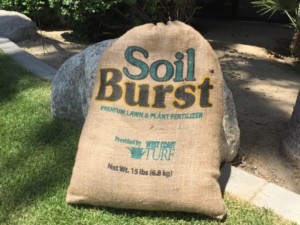Mar
Symptoms of Over-Fertilizing your Lawn
I Over Fertilized my Lawn What Should I do Now?
Fertilizer is used on lawns to provide supplemental nutrients that grass needs to grow in faster and thicker. It’s the most effective on soil that is deficient in nutrients because it contains high levels of nitrogen which promotes quick top growth and phosphorus that aids in root growth. Most fertilizers also contain potassium which helps keep your lawn healthy and disease-resistant.
All these nutrients together are exactly what your grass needs to stay healthy, however the amount of nutrients you provide will determine your lawn’s overall health. Both fertilizing at the wrong time and over-fertilizing can hurt both your lawn and your wallet. Which is why it’s important to understand the effects of over fertilization and learn proper fertilizing techniques.
Signs of Over-Fertilization
Be sure to follow fertilizer and watering guidelines carefully to help avoid over fertilizing your lawn. The amount of fertilizer your grass requires depends on both the type of grass and the type of fertilizer being used. On average, lawn fertilizers should be applied every 6 to 8 weeks, at least four times a year.
While some signs of over-fertilization are easy to spot, others may be more difficult to notice. Common symptoms of over fertilized sod include:
- Fertilizer burn or leaf scorch caused by access nitrogen salts
- Crust of fertilizer on soil surface
- Browning leaf tips and yellowing of lower leaves
- Blackened or limp roots
- Slow to no growth after fertilizing
Most of the time, these symptoms occur due to the buildup of salt in the soil which makes it increasingly difficult for the grass to absorb water over time. Ultimately stunting its growth and possibly killing its roots all together.
How-to Fix Fertilizer Burn
As soon as you notice any of the abovementioned symptoms, you’ll need to take the necessary steps to save your turfgrass from long-term damage. When you notice a layer of fertilizer build up on the soil’s surface, be sure to remove it and avoid adding more soil on top.
Next, you’ll want to water your lawn. On the first day, you’ll want to water until the ground cannot absorb anymore. This helps to dilute and flush the mineral salts away from the roots of your grass. You’ll want to continue watering every day in the morning to continue to flush out the excess minerals, and reduce the risk of fungal diseases.
For more answers and help with your lawn, send your questions to our sod expert Mr. Wise Grass or contact the West Coast Turf team today.


